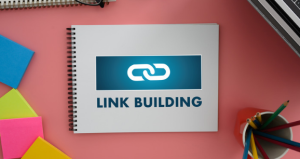Is your website’s organic traffic is dropping continuously? Can’t you figure out why it’s happening? Yes, it’s because of the action of negative SEO.
In this article, we will discuss how to detect negative SEO attacks and how to overcome and improve your website traffic. Before we get into how to detect those niches, first you need to understand what the negative SEO is.
What is Negative SEO?
Negative SEO occurs when your competitor uses black-hat techniques who attempt to damage your i.e., his competitor’s websites or web pages. This action is illegal and unethical to SEO careers.
Types of Negative SEO Attacks
Low-quality backlinks are the main reason for negative SEO, many SEO experts buy bulk links for low prices, and they do not bother about the spammy links. There is a number of websites that provides millions of backlinks for a price and a maximum of them will be spam links.
Other common SEO mistakes are,
- Submitting fake link removal request
- Leaving fake negative reviews
- Hacking sites and other forms of cyber security attacks
Does Negative SEO work?
Google officially says it’s no till 2021 but taking Goole’s words as a face value will not always work. Google professionals always call negative SEO as a meme, but negative SEO is still working for many websites.
Penguin is a part of Google algorithms that can detect spam links and directly affects the SEO ranking of the website. After 2006, Google introduced an update Penguin 4.0, which is very helpful for SEO experts, that detects link spam and remove those links from the websites, and this will not affect the ranking of the website.
How to Detect Negative SEO Attacks and Fix them?
Below listed are the common negative SEO attacks and we can see them briefly and how to fix them.
- Spammy Link Building
- Fake Link Removal Request
- Content Scrapping
- False URL parameters
- Fake reviews
- Hacking your site
Spammy Link Building

Building a number of low-quality links to a highly competing website result in negative SEO whether the link may be from cheap Fiverr Gigs, Scrapebox comments spam or from PBN.
How can spam links affect your site?
There are two ways to link spam that reflects in negative SEO, and unethical SEO can use both.
- The Volume Approach – It will affect thousands upon thousands of low-quality links on your site.
- The over-optimized anchor text approach – Pointing a number of links with exact match anchor texts will result in an unnatural anchor text ratio.
Both the approaches can affect your website ranking either algorithmically by Penguin or manually by the Google webspam team, but they can be identified easily so you can fix them.
How to detect Spam Link attacks?
You can detect these spam links in three methods,
1. Find Spam Links in real time
You monitor all your backlink reports and detect all the new links that are linked to your post using Ahrefs Alerts. You can do this by,
Alerts>Backlinks>New Alert>Enter Domain>New Backlinks>Set Email Interval>Add
If you fed up your domain by linking your email address in Ahrefs Alerts you can get daily email reports about the backlinks to your site.
With this history of new backlinks, you can have an idea about your daily backlink portfolio. If you detect several new backlinks abnormally, then it might be the negative SEO attack.
2. Check the Referring Domains and Page Graphs
Another easiest method is to analyse the graphs where you can get spikes when a number of backlinks occur. It may be a success for your campaign like your blog post could be viral or it may be a negative SEO attack.
You can check the links in the backlinks report by using the filters Dofollow, one click per domain, new backlinks, and choosing the time period when new backlinks occur.
3. Check the Anchors report
The above two methods are effective for the large number of spam links affecting your business website, this method is to find the anchor text ratio. Go to Anchors tab, select Dofollow links and check the Ref.domains with anchor texts.
If you found a high percentage of keyword-rich anchors, then it might the negative SEO attack or a sign of bad link building practices.
How to fix this Link Spam Attack?
Removing the spam links is virtually impossible and here comes the disavow, disavow is the process of uploading a number of websites in a certain format by telling Google to remove those links.
But in recent days, Penguin 4.0 automatically detects the spam links and removes them so disavow is not required for spammy links.
Fake Link Removal Requests
Many website owners are facing this issue and it is common in this SEO field, without proper research you should not remove any link from your websites.
If you removed the links by accepting the fake removal requests, then you might miss your strong backlinks, this can be found easily by Ahrefs Alert emails.
When your link is removed by a website owner reach out to them and explain the removal request is not from your site and ask them to reinsert your link.
Content Scrapping

Content scraping is the process of publishing your content on another website without any changes. Google can easily identify them and if the content is posted on highly authorized sites, Google thinks that the content is originated from there.
It will negatively impact your SEO rankings; you can find this by searching a paragraph of your content on Google. Note that Google will take only the first 32 words for search and the result will leave as a query.
This is good for a single content, if you have a number of URLs having your content, then you can use the Back Analysis tool from Ahrefs, and it will display the traffic growth of all the websites that have your content.
Make sure the traffic is zero, if any of the websites attain more traffic then it will be a negative SEO attack for your website, and their content scrapping works.
How to fix this Content Scraping?
You can fix and improve your traffic using these methods,
- Ask for an attribution link
- File a DMCA complaint
- Ensure proper internal linking structure
False URL Parameters

URL parameters are the important factors of any website, and they should contain the main keyword you are focusing on. Avoid using small size URLs this will be helpful for your competitors to insert fake URLs.
URL parameters can cause all the types of indexing issues and a single page may be indexed multiple times. This attack can be easily identified using Google Search Console if you have more spikes in the indexed pages.
How to fight back against URL Parameters?
It is important to take preventive measures in the first place and you can use the self-referencing canonical tag to initiate Google about your page.
Fake Reviews

If you are running a business, reviews are the first impression that attracts more clients. It will be displayed in the Google snippet when a user searches for your service.
The fake reviews will affect your business reputation directly and it also reduces your productivity, profit. and conversion rates. It is important to monitor all the reviews about your business, and if you find any negative or fake review report immediately.
Ask your customers and clients to post more positive reviews about your business that can attract audiences.
Hacking your Site

Hacking is one of the negative SEO attacks that can harm your business reputation and your website traffic. Google always detects all the websites and if there are any malware functions then Google automatically flags your website as hacked.
It is important to avoid these kinds of negativities to prevent your business reputation, and you should install all the safety certificates, use strong passwords, and keep your CMS like WordPress and Shopify updated to avoid hacking.






































